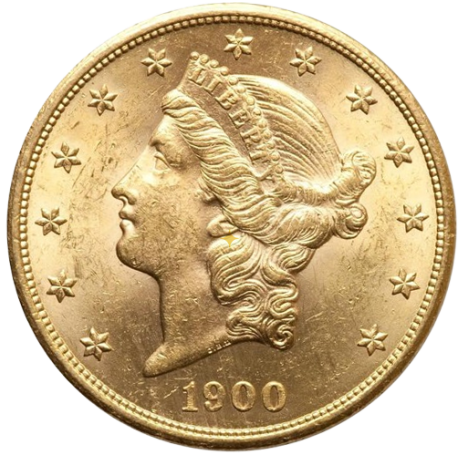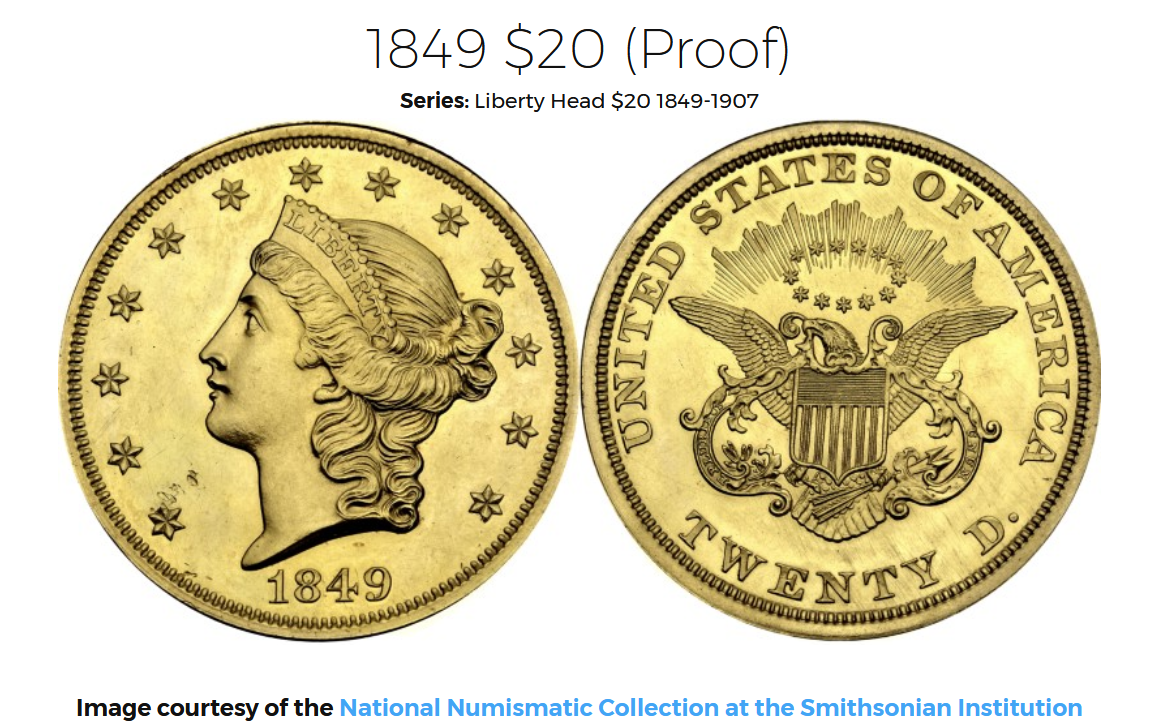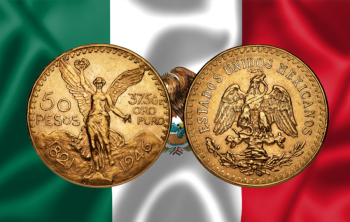How to BuySee the full summary
Buy at the counter
Liberty 20 dollar gold coin
-
30.09 g
-
33.436 g
-
 USA
USA
-
900‰
-
1850
-
GOLD
-
American coins
Brief Summary of the $20 Liberty Head Double Eagle Coin
The $20 Liberty Head double eagle is a gold coin that was created in 1849 and used as a means of exchange from 1850 to 1907 in the United States of America. It was the first twenty-dollar gold piece struck in the USA and was the only one until it was replaced by the Saint-Gaudens double eagle in 1907.
Before the creation of the Liberty Head, the largest US coin denomination was the ten-dollar piece called the eagle. This was due to authorization by the Coinage Act of 1792, which established the United States Dollar as the official currency of the United States.
The Act of 1792 prevented the minting of higher denominations until the discovery of gold in California in the 1840s. When gold bullions were brought from California to the east, the discovery forced the Congress of the United States to reconsider its decision on the denominations of gold coinage. This led to the creation of the one-dollar and twenty-dollar gold pieces.
The Chief Engraver of the United States, James B. Longacre, designed the Liberty Head in 1849. A few pieces, meant as patterns, were struck in the year 1849, of which only one survives today.
It resides in the National Numismatic Collection in the Smithsonian Institution in Washington, D.C. Production for circulation began the following year at the mints in Philadelphia, Pennsylvania and New Orleans, Louisiana.
The Design of the Coin
On the obverse side of the coin, there is a head of Liberty in Greco-Roman style facing west with her hair pulled back in a bun. There is a coronet on her head, on which the words “LIBERTY” is inscribed. She is surrounded by thirteen stars, representing the number of the original states, and the year of production is below her image.
The coin's reverse side features a heraldic eagle holding a giant ribbon on which the words “E Pluribus Unum” are inscribed meaning Out of many, one (also translated as "One out of many"). In addition, there are thirteen stars arranged as a halo with an arc of rays over the eagle’s head.
There are three production designs of the Liberty Head double eagle:
Type I (1849–1866)
The first type was the first design made in 1849 and started circulating in 1850 as a means of exchange. The original coins created between 1849 and 1858 had the words “LIBERTY” spelled as “LLBERTY”, but they were corrected, even though visible through magnification.
The coin's reverse side has the words “TWENTY D.” written in an arc under the eagle.
In 1860, there was a revision of the reverse side by Assistant Engraver Anthony C. Paquet. However, the mint quickly recalled this design after discovering that the coin was not abrasion resistant. Some of these minted coins made it to the public and are still available today.
Type II (1866–1876)
During the American Civil War, the Secretary of Treasury received proposals that words and expressions of faith be put on US coins. As a result, all coins large enough to bear the words “IN GOD WE TRUST” were mandated to carry it.
In the type II design of the Liberty Head, the words are placed in the center of the halo above the eagle’s head.
Type III (1877-1907)
The words “IN GOD WE TRUST” are emboldened in this production design. Also, the words “TWENTY DOLLARS” are written in full in an arc below the heraldic eagle.
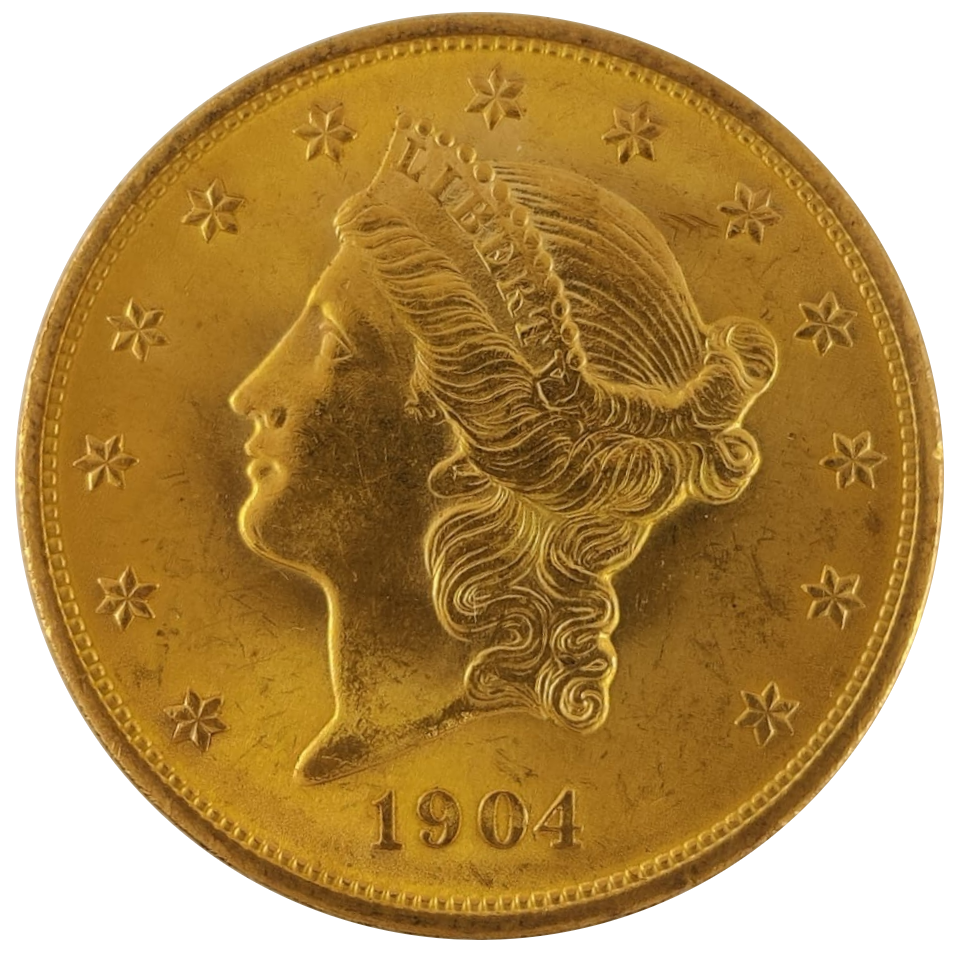
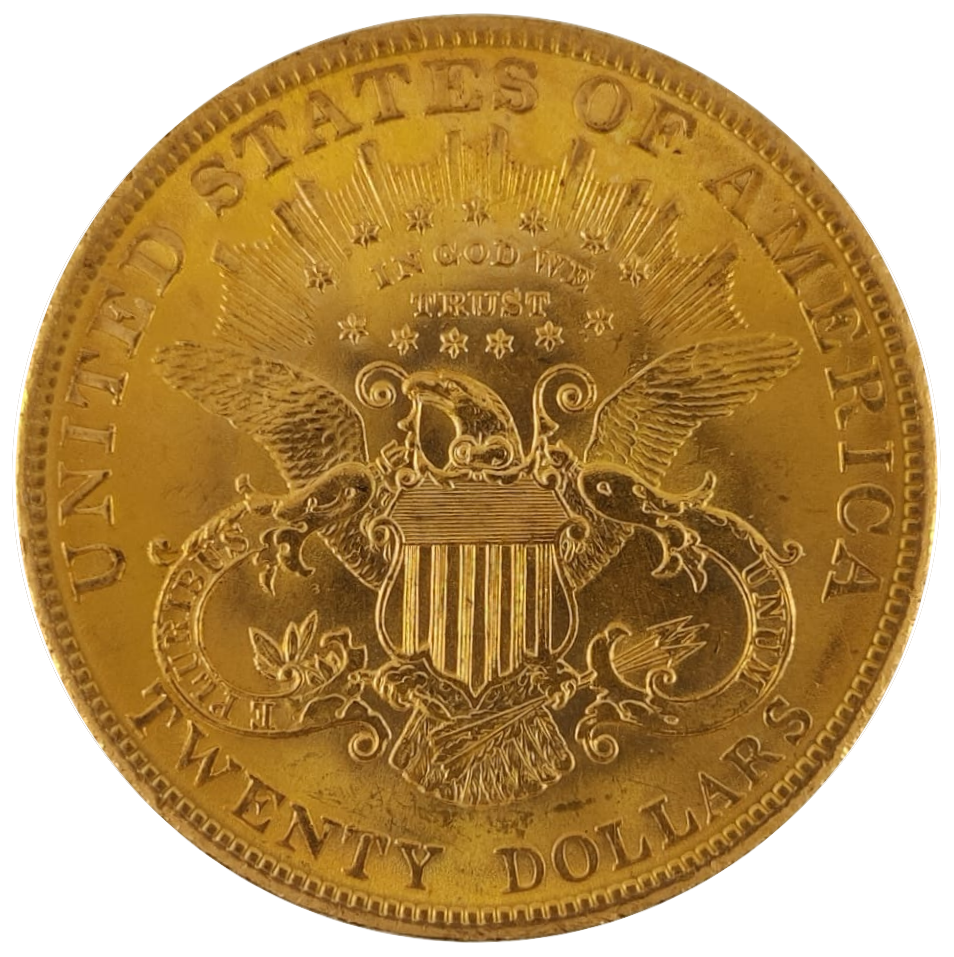
Discontinuation and Aftermath
The Liberty Head was discontinued in 1907 and replaced by the Saint-Gaudens double eagle after President Theodore Roosevelt took on beautifying all American coins. President Franklin Roosevelt retrieved most of them in the 1930s, and the US treasury melted them into gold bars.

